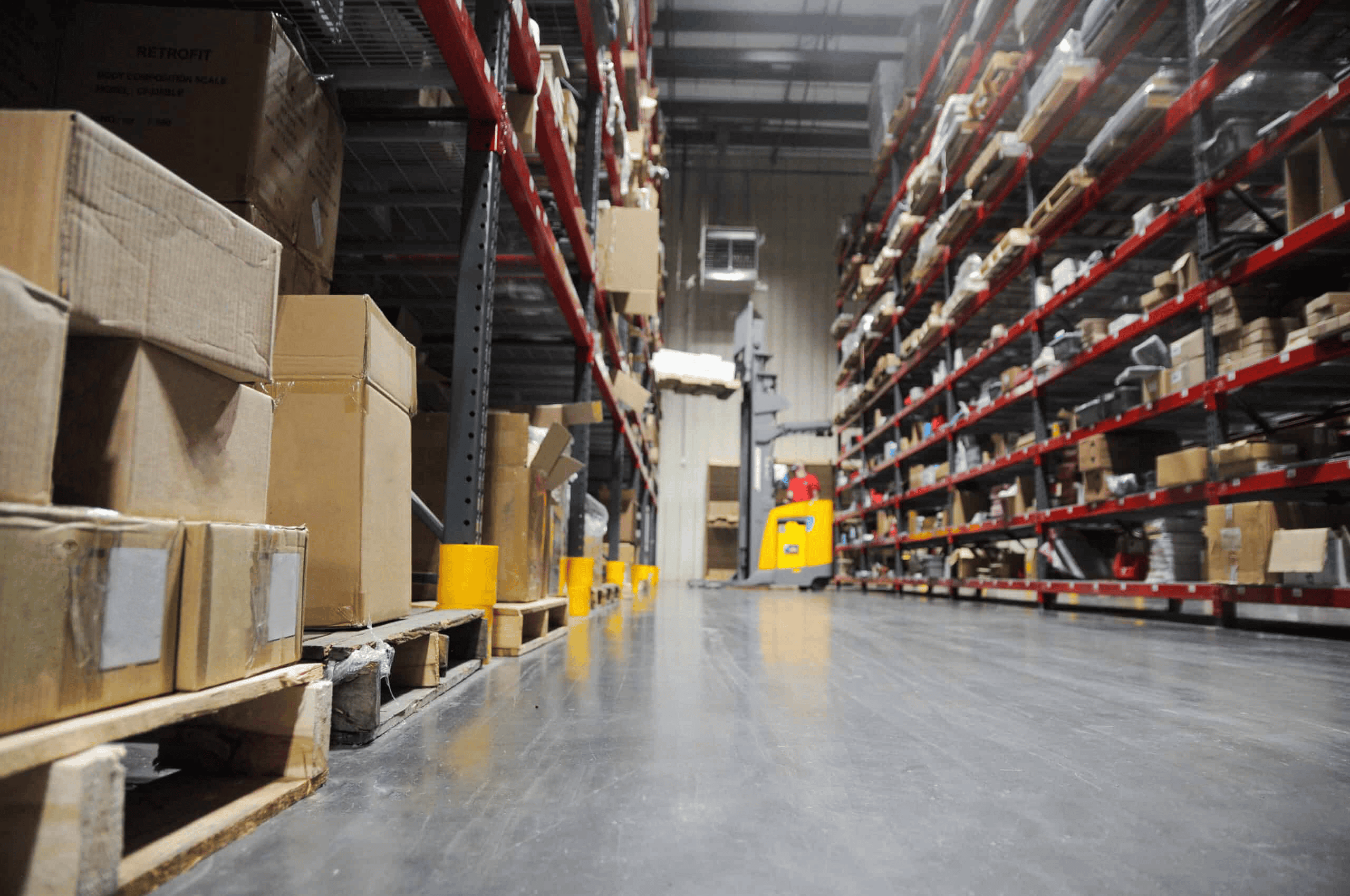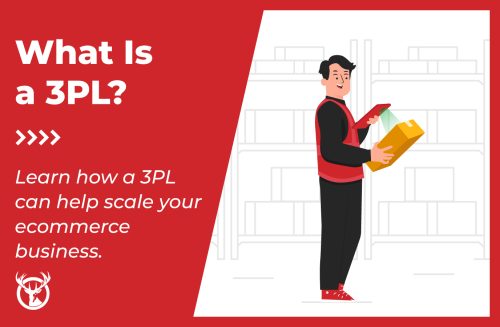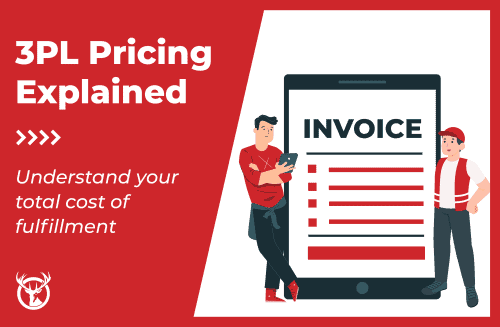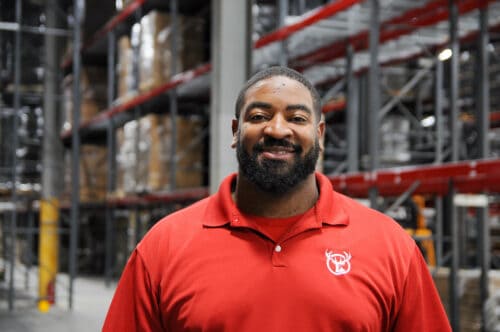You know you’ve needed fulfillment help for a while, and your boss walks into your office or shoots over an email and asks you to put together a 3PL RFP. You’ve likely never done that before. After a quick trip to Google, you’ve landed here while asking yourself, “Now what?”
We get it because we’ve been in similar positions too. So, here are a few tips to help your approach and a downloadable 3PL RFP template to get you going. But before you start filling that out, there are a few questions you need to think about to create a useful 3PL RFP.

TL;DR:
Creating an effective 3PL RFP

A 3PL RFP should help you make direct comparisons between vendors beyond just pricing.

Focus on finding a partner whose capabilities, guarantees, and network align with your business needs.

Consider capacity, location, integrations, shipping partnerships, and returns management.

Use our free 3PL RFP template to gather comparable information from multiple vendors.
Goals of your 3PL RFP process and documents
A 3PL RFP document is designed to answer specific questions so you can make direct comparisons between vendors. The goal is to present a unified set of facts to multiple companies to have your best chance at making an apples-to-apples comparison. But if you’re new to the process, you might not be there yet.

Key Takeaway: Use the process to find the right partner, not just the right price point. It can be expensive to switch 3PLs, so make sure you’re evaluating the complete fit for your company’s growth.
If you’re still learning about RFPs or haven’t written one before, you want to gain an understanding of the businesses you’re comparing. That’s more than just a flat-cost comparison. The ultimate goal is to understand a 3PL’s fiscal health and service capabilities so that you know if they’re a good fit for your company’s growth.
Remember, a good company response will highlight relevant case studies, awards, capabilities, and guarantees with a customer-centric focus specific to your products and business.
Getting started on a useful 3PL RFP
We’ve put the most useful elements of a 3PL RFP in a short document that you can get for free just by clicking the image below. To better understand the purpose of the RFP document, click below to open it up and follow along as you read about the important questions you want your RFP process to answer.

9 questions you want your 3PL RFP to answer
A good RFP drills down each company’s capabilities so that they’re easy to compare. You can get most of this data by asking directly with standard questions. However, you also want tailored information specific to your needs, current operations, and growth plans. While our templates have some specific questions and language you can use, there is another goal to your 3PL RFP.

PRO TIP: You want to understand each 3PL’s business well enough that you can answer core questions in your own words. Gaining that level of detail ensures you’re thinking deeply and making relevant comparisons for your business.
Here are 9 questions that, at the end of the process, you want to be able to answer about anyone on your shortlist.
What’s the total capacity, and where is it located?
01
Knowing more than just the high-level stats of a distribution network is important. You’ll want to understand if the 3PL offers national fulfillment services at 3-day and 2-day speeds.Do they have the volume to handle your current and planned demand at a location or mix of locations that makes sense for you?
How much of that capacity is available? How much has it grown recently?
02
No leadership plans on stagnating, especially your boss. They want to know that, should demand skyrocket tomorrow, there would be space to scale with this 3PL. So, ask directly how much room they have now and what growth they have planned. Uncovering how recently they completed their last upgrade or capacity expansion also can help you gauge the strength of a 3PL — based on scaling versus trying to fill a lot of empty space.

How do these locations and facilities improve fulfillment?
03
The 3PL RFP should give each participant a chance to provide some background on facilities, locations, and infrastructure. Here is where you’ll note the markets they can serve at speeds you want, additional details like railheads you weren’t aware of, new port options that can help you avoid regional delays, and more. Note each provider’s top selling points and specify how that helps you based on your products, carrier requirements, and order volume.
How much of this network is eCommerce? LTL? FTL?
04
Does the 3PL’s network match your needs? Do you have the types of goods they specialize in, or are you a secondary focus? The 3PL market is deep enough to have niches, and there’s likely a fit with the mix of services you need. It’s also a good idea to ensure that their growth is relevant to your business. You don’t want to risk becoming that secondary focus if the 3PL is in the process of shifting its core area of focus.
Who are their top carrier partners, and are their rates and relationships better?
05
Rates aren’t the only thing that matter for fulfillment, but they do play a big role in pricing and decisions. Ask for estimates based on your average or standard order. Discuss where each 3PL negotiates with carriers for discounts or lower rates. See if these align with your needs. For example, negotiating improved DIM weight calculations helps if you sell large and bulky items or significantly padded products, but won’t be a significant discount if you’re shipping small, heavy, and dense goods.
This is a good chance to learn about their approach to regional partners. The more relationships a 3PL has with different carriers, and the better those relationships are, the better your chance of getting the best rate while keeping customers happy.
How easy is it to access real-time data?
06
Getting caught up in the potential of data and dashboards and grabbing as much information as possible to power your efforts is tempting. But your IT team will want to know how easy it is to access this data. Get someone to discuss integrations, where data is sent, and how multiple team members can access this data.
You want ops to access inventory levels and freight data, sales to track long-term storage risks, and customer support to get real-time data on existing orders and returns.

NOTE: Don’t forget to include a list of your existing tech and channels. Ensure that the 3PL integrates with all your goodies or has a simple, straightforward API that enables these connections.
What do they guarantee, and what happens after an error?
07
Go beyond the SLA’s talking points and get a plain-language understanding of the guarantees each partner offers. You want to be able to articulate these clearly to everyone else who joins the 3PL RFP process. Putting them into clear, concise language also makes it easier for you to compare across potential partners.
If any partner — in the 3PL space or otherwise — makes it difficult for you to understand their guarantees, this could be a sign that other aspects of the agreement may also be unclear. You deserve straightforward answers, so ask for them.
We recommend you understand their requirements and promises around:

Order accuracy

Inventory accuracy

Shrinkage

Receiving time

Fulfillment speeds
For comparison’s sake, here’s a quick breakdown of Red Stag’s approach in these areas:

What’s the plan for reverse logistics and returns management?
08
Returns are a fact of life for eCommerce businesses, and they can either be a financial drain or a possible way to improve customer lifetime value. Fulfillment is essential to your financial health because it can reduce returns due to mispick (or increase returns if orders go out incorrectly). It also protects you by ensuring the process is fast and easy when a customer does make a return.

NOTE: ECommerce companies face an average return rate of roughly 20%, potentially rising to 33% after the year-end holidays.
When 3PL RFP responses start coming back to you, you want to understand how a 3PL handles returns, what fees these include, and what steps they take to minimize returns. The guarantees noted above can help, as can standard order policies. We’ve found that scanning items and orders multiple times throughout the pick and pack process helps to eliminate nearly all human error, protecting revenue and inventory.

What’s the complete fee schedule?
09
Your RFP will ask about fees, but at the end of the process, you want to understand what’s on the table for immediate needs and if you use any future services. Look at additional options such as kitting plus indirect costs like account management or helpdesk fees. How do they charge for the storage you use across pallets and bins? When do you pay more for different SKUs or multiple SKUs in an order? Are inserts available, and what is the cost?
Also, ask about carrier costs and what the 3PL passes on to you. Present a 3PL with an order including destination details and ask for the total cost to pick and ship.

ALERT: Getting your examples and details correct before sending out your RFP is important. Give every potential 3PL the same information so you can make a more accurate comparison.
Creating the 3PL RFP
Red Stag Fulfillment created this simplified, direct RFP document to help you begin the RFP process. Use it to start collecting information and answering these questions with the details you need. Be sure to customize this template to fit your company and products.
Ready to Start Your 3PL Selection Process?
This 3PL RFP template can help with valuable comparisons between multiple options, including your in-house fulfillment. It should be simple to customize and tailor to your brand. If you have questions, use the Contact Us button at the top of any page to ask our business development team your questions or get a helping hand.
Let’s talk
What is a 3PL RFP?
A 3PL RFP (Request for Proposal) is a document that companies use to solicit information from potential third-party logistics providers. It outlines your business requirements, shipping volumes, product specifications, and service needs so 3PLs can provide detailed proposals with pricing and capabilities that match your requirements. A good RFP helps you make fair comparisons between different fulfillment providers.










Why is a 3PL RFP important?
A well-structured 3PL RFP helps you evaluate potential fulfillment partners based on the same criteria, ensuring you collect consistent information across providers. This document serves as the foundation for making an informed decision about which 3PL best meets your business needs, can scale with your growth, and offers the right balance of services, technology integration, and pricing for your specific products and customer expectations.











